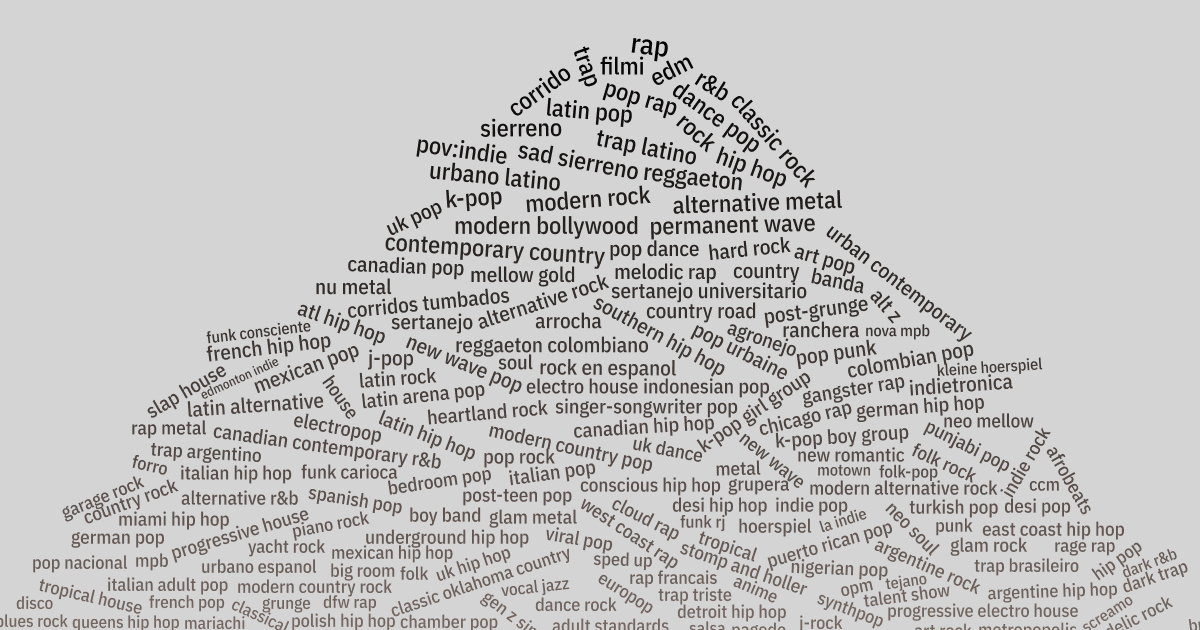Dynamic ontologies and music genres
As a music lover and someone who has more than a passing interest in dynamic ontologies, I found this analysis of Spotify’s changing categorisation of genres fascinating.
Spotify Unwrapped shows users their most-streamed artists, tracks, and genres at the end of the year. But what if you want to find out at another time? I just had a look at Chosic, which told me that my main ‘parent genres’ are Hip hop, Pop, and Electronic. My top sub-genres are trip hop, downtempo, and electronica.
All of the pushback against genre classifications are valid, whether that's inventing escape room and stomp & holler of what qualifies as r&b vs. pop.Source: You should look at this chart about music genres | pudding.coolBut I still think an always-updating catalog of 6,000 genres is groundbreaking.
I see this effort in the same way I see taxonomy: technically accurate, colloquially useless.
For centuries we had generic names to identify animals, such as “fish.” Everything from squid to crabs (and obviously jellyfish) were lumped into the same “fish” bucket.
But on closer inspection, most of these animals were not related at all. In a research context, scientists have draw boundaries between animals that we mindlessly lumped together.
Similarly, the genre database adds much needed detail to broad categories, like hip hop and rock. For musicologists, it’s an anthropological gold mine. And for Spotify, it likely helps them to better profile their users' music tastes.
But these genres don’t necessarily work in casual conversation: you can describe your music taste as indie, even if, technically, Spotify says it’s escape room. The same goes for biology: people should call figs a fruit, even though it’s technically an inverted flower.
